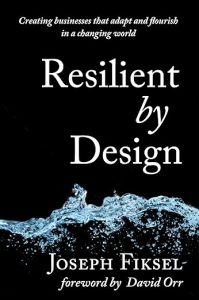In Part Two, DesignIntelligence’s Dave Gilmore emphasizes three core responsibilities for the design community: environmental, social, and economic.
Dave stresses the importance of moving from myopic views to becoming planetary citizens, designing socially responsible spaces that promote equity, and considering the holistic economic impact of design decisions. Additionally, he highlights the need for ongoing research, risk awareness, leadership development, and a reevaluation of the profession’s value amidst the rise of AI technology, all while navigating the unpredictable landscape of the built environment.
Transcript
Are we allowing our designs to promote equity and opportunity for people? Or are our designs limiting and constraining equity in opportunity for people?
Number two is social responsibility. It is the design community’s call for their buildings, their interiors, their landscapes, their pieces and parts, to be socially responsible. Are we building and designing buildings and neighborhoods and contexts that are separating people from one another, creating barriers to entry rather than creating a more collaborative social construct? Are we allowing our designs to promote equity and opportunity for people or are our designs limiting and constraining equity and opportunity for people? Thirdly, is the economic responsibility. We design and build buildings that have unbelievable economic power, but is that power also hurting other economics within an area? Are we doing things that are looking at a more holistic economic benefit to a community, to a city, to a state, to a region, to a country? Are we looking at the work that we’re doing as an economic powerhouse for common good or is that just not even in our mindset at all? And so the design community must be called forward to adopt and to embrace these three responsibilities: environmental, social, and economic responsibility in the work that we do. Risk is just a thing every morning when you and I wake up, we risk stubbing our toe on the way to another room. We risk chipping our tooth as we brush our teeth in the morning. We risk a hundred things, but what have we learned? We’ve learned how to navigate and mitigate or eliminate risk along the way. And so what we’re hoping can occur is a new call to risk awareness. We do that through how we think about the first thing is to do is to identify risk. What is it? Is this really risk? Secondly, to isolate the risk, set it off to the side so it can be looked at and understood. Thirdly, and if possible, eliminate the risk. And if you can’t eliminate it, then you can mitigate the risk, which means to lessen it, make it less, set it aside. And this just very simple idea of risk management needs to become pervasive across the built environment and particularly the design professions. Because when we start to operate with a new risk awareness, not a risk aversion, but a risk awareness, I believe that our collective design capabilities will leap us forward without the fear that we often operate in. What we’re realizing is that most leaders fail to invest in their own capabilities. On any given day, you’re fighting crocodiles. By the end of the day, you’re so tired reading a book or listening to a podcast or educating yourself about something is the last thing on your mind. And this goes on day after day after month after year after year. We find that so many of the leadership people across the design communities are literally living on fumes, making it day to day, making expedient decisions, not particularly wise decisions. And that’s not a criticism toward anyone, it’s just the natural outcome of running on fumes. When you’re so thin, all you know to do is just make it to the next thing. So our call to the general leadership community of architecture, interiors and the other professions, landscape, industrial design, advisory services, all the engineering specializations is to spend more time in developing your leaders and preparing leaders to lead in a more effective way. When we learn basic business principles and basic leadership principles and we put those into the water system of our firms, we will begin to ascend and we’ll start making smarter decisions. And at the end of the day, leadership is first and last about decision making. A few years ago, the Design Futures Council met in Rome, Italy, and we brought a special guest to speak to us, Dr. Joseph Fixel, who was at the time a professor at Ohio State University. He wrote an amazing book called Resilient by Design. The thing that stood out most and most prominently to me was his definition of resilience. Let me speak to that just a second, because I’ve just been saying we need to build resilient businesses. And sometimes people don’t define the word resilience appropriately. We often think of resilience as endurance, and it’s not. He talked about resilience is number one, having the fitness to recover from a setback, a knockdown, a setback, whatever that is, the fitness means I got knocked down, I can get back up. I’m fit enough to get back up. Number two is the adoption of a new awareness from having gotten back up. If I’ve never fallen down, my awareness is different, but when I’ve been knocked down and I get back up, changes my awareness, it changes my risk awareness, it changes my opportunity, awareness. And then number three is flourishing forward that when you just get knocked down and get back up, all you’re doing is enduring because you’re ready for the next knockdown. But if you are really resilient, you move from a place of getting up, adopting awareness and flourishing forward to the next place. And this is the call of DesignIntelligence to the design communities and to the design businesses that are operating across this massive business landscape to adopt this threefold definition of resilience and begin to build businesses that think about fitness, adaptation, and flourishing. And I just received a newspaper article yesterday from one of my colleagues who is vacationing in South Carolina. He sent this beautiful newspaper clipping, showed this gorgeous house in a neighborhood and kids and everything, and I’m telling you, it was photorealistic. Even the children, the shadows, everything. It was all AI generated as a new design firm is putting out these AI generated designs, and you’re going, wow. Right? What does that mean to the design community that has learned the science and art of design, and how does that threaten our future? I would say that there will be many investors, some intelligence, some naive who will think they can bypass the design communities by pushing a button and they can lower the cost of their work by pushing a button at the end of the day. Sadly, that won’t quite work out for them altogether. I think that the design communities have to ask themselves, as a designer, whether that’s an architect, an interiors, a landscaper, an engineer, as a designer, what is my value? Is it drawing lines? No. Is it a stack of printed sheets? No. Is my design is even my 3D rendered a rendering – is that my value? No. Your value is an understanding both the science and the art of design set within the multiple context, the myriad context that you’re being asked to design into understanding the human experience and adopting these three responsibilities that I talked about. When the human gets its center around what its true value is in design, then AI becomes an augmentation to that. It truly moves from artificial to augmented intelligence, and it’s really up to each designer individually to define their own value. Again, we’ve been for far too long, the monetary context has been, I pay you for a design, therefore, that’s your value. It’s not that I pay you for your expertise, I pay you for your design when it’s really your expertise is how to think differently than other people who are not design thinkers. The value is something else. We must rediscover that value because it’s worth more than we’re being paid for our designs. I’ll tell you that. We fundamentally, as a country, have not made the changes necessary to prepare for another public health crisis. We talked about what we experienced in our lives and in our institutions, but I’m not particularly sure that that’s been codified into a new set of functional behaviors, and therefore I believe that we are probably as vulnerable now than we were before the COVID-19 pandemic to another public health crisis. If that is the case, what can you do as a business owner, as a designer, as an advisor to a business owner from the design community to help your clients as well as yourself, better prepare for any eventuality like that that would come? We do believe that the US will enter into some challenging economic times, probably in the next couple of years, but not now. I don’t believe we’re going to see a recession in the next, probably the next couple of years, but beyond that, it’s hard to see. And there are many things that would call us potentially into a recessionary state later, or a challenge state. But again, my crystal ball’s kind of foggy today, so I can’t see beyond that. But the bigger question comes down to, regardless of what challenges are ahead, are we building resilient businesses.
Read the Full TranscriptThree Responsibilities (01:04)
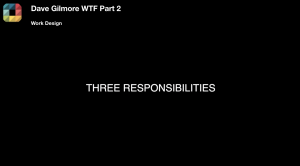 There are three responsibilities for the design community. Fundamentally, these are core responsibilities aren’t options. These are true responsibilities. Number one is being responsible about the environment. All of us are living on this planet. At the end of the day, we have to move from being myopic to becoming planetary citizens. We all live on this planet, and boy are we watching it right now. We are seeing record temperatures occur in many parts of the world. The United States, we’re seeing it in the Southwest across Southern Europe, is extreme heat that is going on higher than even the summer before where 64,000 people died as a result of heat and climate problems. At the end of the day, the design community has answers to begin to walk back the environmental destruction and damage that has occurred, and that is continuing to occur. And it comes down to how we design. Are we thinking first and foremost as planetary citizens or are we myopically just doing another project, not thinking of the implications and ramifications of the outcomes of that design?
There are three responsibilities for the design community. Fundamentally, these are core responsibilities aren’t options. These are true responsibilities. Number one is being responsible about the environment. All of us are living on this planet. At the end of the day, we have to move from being myopic to becoming planetary citizens. We all live on this planet, and boy are we watching it right now. We are seeing record temperatures occur in many parts of the world. The United States, we’re seeing it in the Southwest across Southern Europe, is extreme heat that is going on higher than even the summer before where 64,000 people died as a result of heat and climate problems. At the end of the day, the design community has answers to begin to walk back the environmental destruction and damage that has occurred, and that is continuing to occur. And it comes down to how we design. Are we thinking first and foremost as planetary citizens or are we myopically just doing another project, not thinking of the implications and ramifications of the outcomes of that design?A Pursuit of Understanding (03:49)
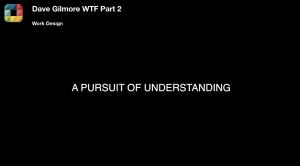 I think it’s really critical that we begin almost all of our work with research. Far too often we leap into a design commission and start to design. instead, it would be interesting if our design process began with a pursuit of understanding. I like what Solomon the Wise said like 3000 years ago. He said, ‘in all you’re getting get understanding’. And I think that when we sit down and interview the client and we interview the people that’ll be impacted by the design, whether they’re living in the design or they’re providing to the design, it will yield for us a new light of understanding as to what the site really needs to be. And out of that research, which is more than one conversation, by the way, it’s a series of conversations that are codified and classified and put into a set of knowledge that we could then create a circle of collaborators who come to speak into that body of knowledge that could yield then a new design consciousness on how we’re trying to approach work in the things that we do.
I think it’s really critical that we begin almost all of our work with research. Far too often we leap into a design commission and start to design. instead, it would be interesting if our design process began with a pursuit of understanding. I like what Solomon the Wise said like 3000 years ago. He said, ‘in all you’re getting get understanding’. And I think that when we sit down and interview the client and we interview the people that’ll be impacted by the design, whether they’re living in the design or they’re providing to the design, it will yield for us a new light of understanding as to what the site really needs to be. And out of that research, which is more than one conversation, by the way, it’s a series of conversations that are codified and classified and put into a set of knowledge that we could then create a circle of collaborators who come to speak into that body of knowledge that could yield then a new design consciousness on how we’re trying to approach work in the things that we do.What is the Problem? (05:07)
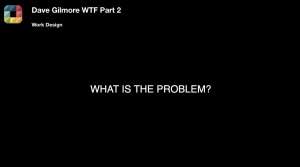 I was calling for architectural firms to create dedicated alliances. Alliances with these specialty stakeholders that could speak regularly into their designs. At DesignIntelligence, we often ask the question, what’s the problem you’re trying to solve? And that’s an interesting, maybe even commonsensical question that’s not so common because more often than not, an investor puts forward a commission, there’s bids and competitions toward that commission, and we don’t see it as a problem. We see it as an opportunity to design. What the reality is, is that the investor is trying to solve a problem. They have to move some money. They have to deal with a competitive dynamic of other portfolios around them. They have to get a good return on their investment for all the investors that put money into their fund, I could go on and on. They are looking through a problem lens at first and an opportunity lens second most of the time. But we are not, as design professionals, often looking at problems to solve. We are looking at opportunities to show our great design and our cool stuff.
I was calling for architectural firms to create dedicated alliances. Alliances with these specialty stakeholders that could speak regularly into their designs. At DesignIntelligence, we often ask the question, what’s the problem you’re trying to solve? And that’s an interesting, maybe even commonsensical question that’s not so common because more often than not, an investor puts forward a commission, there’s bids and competitions toward that commission, and we don’t see it as a problem. We see it as an opportunity to design. What the reality is, is that the investor is trying to solve a problem. They have to move some money. They have to deal with a competitive dynamic of other portfolios around them. They have to get a good return on their investment for all the investors that put money into their fund, I could go on and on. They are looking through a problem lens at first and an opportunity lens second most of the time. But we are not, as design professionals, often looking at problems to solve. We are looking at opportunities to show our great design and our cool stuff.From What to How (06:31)
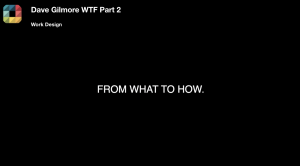 I quoted one of my friends that’s one of the strategy folks here at DesignIntelligence, Hail Kochi, and Hail has been saying this to me regularly. ‘We have moved past the era of what, and we have entered the era of how’ and what he was saying is we’ve accumulated knowledge, the what for so many decades that we’re fat with knowledge. We just, we’ve got so much. We have so much knowledge and so little know-how at the end of the day. Our knowledge is almost confusing our know-how.
I quoted one of my friends that’s one of the strategy folks here at DesignIntelligence, Hail Kochi, and Hail has been saying this to me regularly. ‘We have moved past the era of what, and we have entered the era of how’ and what he was saying is we’ve accumulated knowledge, the what for so many decades that we’re fat with knowledge. We just, we’ve got so much. We have so much knowledge and so little know-how at the end of the day. Our knowledge is almost confusing our know-how.Stuck in a Practice (7:06)
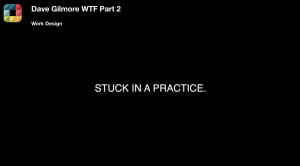 It’s become too onerous with all these different specializations and we get frozen in this place. Even the architectural profession has moved so far down the specialization route that students coming out of school are immediately stuck into a practice. I’m in the healthcare practice, I’m in the retail practice, I’m in the office practice, I’m in the whatever practice. And they can spend their entire career just doing one building type for one industry extraordinary. But when they went through school, it was practice agnostic. It was architecture. It was learning design thinking and how to apply that thinking to multiple problems. And this is what we have to get back to. In my opinion, I believe the architectural profession needs to move more towards a broader generalization with a set of expertise depths that they can go into instead of being so narrow in just certain specializations. Because we are part of the reason for this exacerbated problem of complexity because we have yielded so much of the ground because we want to do our one little thing that we’ve yielded the field to so many others who are now picking up all these niches of specialization, which is causing the cost of design and construction to rise crazily. And the time factor is stretched out further. And the complexity of troubleshooting just gets more and more exacerbated.
It’s become too onerous with all these different specializations and we get frozen in this place. Even the architectural profession has moved so far down the specialization route that students coming out of school are immediately stuck into a practice. I’m in the healthcare practice, I’m in the retail practice, I’m in the office practice, I’m in the whatever practice. And they can spend their entire career just doing one building type for one industry extraordinary. But when they went through school, it was practice agnostic. It was architecture. It was learning design thinking and how to apply that thinking to multiple problems. And this is what we have to get back to. In my opinion, I believe the architectural profession needs to move more towards a broader generalization with a set of expertise depths that they can go into instead of being so narrow in just certain specializations. Because we are part of the reason for this exacerbated problem of complexity because we have yielded so much of the ground because we want to do our one little thing that we’ve yielded the field to so many others who are now picking up all these niches of specialization, which is causing the cost of design and construction to rise crazily. And the time factor is stretched out further. And the complexity of troubleshooting just gets more and more exacerbated.It’s About the Problem (08:46)
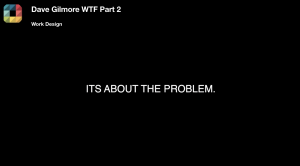 We’ve had the privilege of spending time with some of the, we might call ’em the great architects of the 20th century’, even now operating still in the 21st century and sat down and have had significant conversations with Lord Norman Foster or Moshe Safdie or Robert Stern, or I could go on. So many have been a part of our context. In our discussions. And it’s very interesting because you don’t particularly identify any of those folks that I just mentioned. I think of Marianne McKenna out of KPMB up in Toronto. You don’t think of them as, ‘oh man, this guy is the best hotel designer in the world’, or ‘this guy, or she is the best office building designer in the world’. We don’t think that way. We think of these architects as being, I have a set of tools and expertise. What’s the problem you’re trying to solve? I don’t care what dominion or domain that it’s in. I care about the problem and I’m wanting to know why we can’t get back to that in a more holistic way.
We’ve had the privilege of spending time with some of the, we might call ’em the great architects of the 20th century’, even now operating still in the 21st century and sat down and have had significant conversations with Lord Norman Foster or Moshe Safdie or Robert Stern, or I could go on. So many have been a part of our context. In our discussions. And it’s very interesting because you don’t particularly identify any of those folks that I just mentioned. I think of Marianne McKenna out of KPMB up in Toronto. You don’t think of them as, ‘oh man, this guy is the best hotel designer in the world’, or ‘this guy, or she is the best office building designer in the world’. We don’t think that way. We think of these architects as being, I have a set of tools and expertise. What’s the problem you’re trying to solve? I don’t care what dominion or domain that it’s in. I care about the problem and I’m wanting to know why we can’t get back to that in a more holistic way.Risk is Just a Thing(10:02)
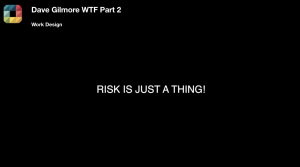 I think that part of the difficulty of the architectural profession, primarily has been its aversion to risk. And that certainly is probably more of a 50, 60 year phenomenon than it was before. The contractual instrumentation that’s primarily used in American architecture, which has spilled over into cooperation with Reba and other global architectural affinity groups, has pushed the architect further and further from the table because the architect is so risk adverse. We’re worried about being sued, we’re worried about some kind of malpractice of some type happening. I think that in the more you get away from the risk table, the less voice you have at the decision table. And so our call at DesignIntelligence is to call people into risk awareness and intelligent risk awareness, and then the ability to navigate that accordingly. Risk is neither a good thing nor a bad thing.
I think that part of the difficulty of the architectural profession, primarily has been its aversion to risk. And that certainly is probably more of a 50, 60 year phenomenon than it was before. The contractual instrumentation that’s primarily used in American architecture, which has spilled over into cooperation with Reba and other global architectural affinity groups, has pushed the architect further and further from the table because the architect is so risk adverse. We’re worried about being sued, we’re worried about some kind of malpractice of some type happening. I think that in the more you get away from the risk table, the less voice you have at the decision table. And so our call at DesignIntelligence is to call people into risk awareness and intelligent risk awareness, and then the ability to navigate that accordingly. Risk is neither a good thing nor a bad thing.Preparing to Lead (12:29)
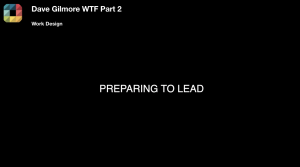 The theme of leadership has been a front and center for DesignIntelligence over the last several years as we observe how many firms are really lacking in formal leadership and leadership development. I mean, the reality is when you went to design school, there were no classes in leadership. There were no classes in management. You kind of come out out of school and enter the profession and you’re just like, ah . . . and you don’t know what to do. You don’t know how to lead people. You don’t know how to deal with difficult decisions. Sometimes our experiences from our past and our woundings from the past drive our behaviors, and those aren’t always positive or healthy for organizations. So we’ve been spending a lot of time over the last several years with leaders across the environment. I would say conservatively on any given year that design intelligence advisors spend time with between 3 and 400 firms in the built environment across the world, speaking into the lives of leadership teams, to boards of directors, to executive committees, to practice leaders and all the way through.
The theme of leadership has been a front and center for DesignIntelligence over the last several years as we observe how many firms are really lacking in formal leadership and leadership development. I mean, the reality is when you went to design school, there were no classes in leadership. There were no classes in management. You kind of come out out of school and enter the profession and you’re just like, ah . . . and you don’t know what to do. You don’t know how to lead people. You don’t know how to deal with difficult decisions. Sometimes our experiences from our past and our woundings from the past drive our behaviors, and those aren’t always positive or healthy for organizations. So we’ve been spending a lot of time over the last several years with leaders across the environment. I would say conservatively on any given year that design intelligence advisors spend time with between 3 and 400 firms in the built environment across the world, speaking into the lives of leadership teams, to boards of directors, to executive committees, to practice leaders and all the way through.Future Ready (15:22)
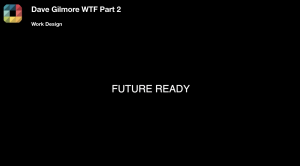 We’ve got to be able to start thinking more into the future and being able to prepare resilient businesses and business plans that accommodate those future possibilities. And so I am concerned in general by the US economy, US politics, as well as the US design industries, are we really spending enough time to prepare and build resilient businesses or are we spending too much time looking for the next opportunity? So there’s a big difference. The dog that chases the passing car to catch the tire, God forbid that he catches the tire because all he gets is a mouthful of rubber. At the end of the day, that’s kind of how we’re behaving most of the time. Instead of thinking past the car to the destination of maybe where the car’s going, and I think this is where we have to start changing our mindset. I’m deeply concerned by our lack of focus on the future and how we prepare for the future. It’s interesting people talk about future proofing. I don’t believe you can proof the future, but I believe you can do future readying. You can ready for the future in an appropriate ways.
We’ve got to be able to start thinking more into the future and being able to prepare resilient businesses and business plans that accommodate those future possibilities. And so I am concerned in general by the US economy, US politics, as well as the US design industries, are we really spending enough time to prepare and build resilient businesses or are we spending too much time looking for the next opportunity? So there’s a big difference. The dog that chases the passing car to catch the tire, God forbid that he catches the tire because all he gets is a mouthful of rubber. At the end of the day, that’s kind of how we’re behaving most of the time. Instead of thinking past the car to the destination of maybe where the car’s going, and I think this is where we have to start changing our mindset. I’m deeply concerned by our lack of focus on the future and how we prepare for the future. It’s interesting people talk about future proofing. I don’t believe you can proof the future, but I believe you can do future readying. You can ready for the future in an appropriate ways.Fitness, Adaptation & Flourishing (16:44)
Think Differently (18:46)
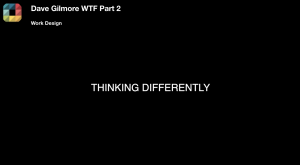 AI is certainly the newest, biggest disruptor that’s hit us, and we’ve been talking about it for a few years. But finally, when chat GPTX, whichever version you want got put out, and now there are multiple sisters, brothers, and cousins of that technology that are blowing through the industry, through the world across multiple industries, we’re seeing a technology that is unregulated. To tell you the truth, it’ll never really get the lasso around it for regulation. The Pandora’s box is opened, and that’s just the way it is, and that technology holds tremendous promise across many industries on a global scale. It is extraordinary. At the same time that technology holds tremendous threat to many people in many professions around the world. For the design profession, the question that is hitting us every day is, is that a AI generated design or is that a human generated design?
AI is certainly the newest, biggest disruptor that’s hit us, and we’ve been talking about it for a few years. But finally, when chat GPTX, whichever version you want got put out, and now there are multiple sisters, brothers, and cousins of that technology that are blowing through the industry, through the world across multiple industries, we’re seeing a technology that is unregulated. To tell you the truth, it’ll never really get the lasso around it for regulation. The Pandora’s box is opened, and that’s just the way it is, and that technology holds tremendous promise across many industries on a global scale. It is extraordinary. At the same time that technology holds tremendous threat to many people in many professions around the world. For the design profession, the question that is hitting us every day is, is that a AI generated design or is that a human generated design?Are We Prepared? (22:42)
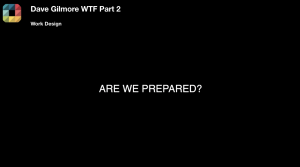 I do want to say a little bit about what’s next. We don’t have any crystal balls over here, but we do look to the future quite a bit in our research and in the work we do with so many firms and across industry. There’s no doubt about it, I don’t believe we’re going to hit a recession in the United States anytime soon. It’s not a recessionary dynamic. We are going to see a really unpredictable and uneven built environment for a while. Just like we’ve been talking about the office workplace, it’s going to be radically challenged by foreclosure defaults, new investment mindsets, a pumping of the brakes on some things and so that area may be very unpredictable. There are a few other areas that are like that. While some areas of design and construction are just going to flourish, they’re going to continue to go. So we’re going to see this very uneven space for a time.
I do want to say a little bit about what’s next. We don’t have any crystal balls over here, but we do look to the future quite a bit in our research and in the work we do with so many firms and across industry. There’s no doubt about it, I don’t believe we’re going to hit a recession in the United States anytime soon. It’s not a recessionary dynamic. We are going to see a really unpredictable and uneven built environment for a while. Just like we’ve been talking about the office workplace, it’s going to be radically challenged by foreclosure defaults, new investment mindsets, a pumping of the brakes on some things and so that area may be very unpredictable. There are a few other areas that are like that. While some areas of design and construction are just going to flourish, they’re going to continue to go. So we’re going to see this very uneven space for a time.
Three Key Takeaways:
- Triple Responsibility of the Design Community: The design community has three core responsibilities: environmental, social, and economic. Embracing these responsibilities means considering the broader impact of designs on the planet, society, and the economy. This entails designing with a planetary perspective, promoting social equity and opportunity, and contributing to holistic economic benefits for communities.
- Prioritizing Research and Problem-Solving: There’s a call for the design process to begin with thorough research and understanding of the problems at hand. Rather than jumping straight into design, a deeper understanding of the context and stakeholders involved leads to more effective solutions. The emphasis is on adopting a problem-solving mindset and collaborating with various stakeholders to address complex challenges.
- Adapting to Technological Disruption: The emergence of artificial intelligence (AI) presents both opportunities and challenges for the design community. Designers must redefine their value proposition in the face of AI by emphasizing their expertise in understanding the science and art of design within diverse contexts. AI should be seen as an augmentation to human creativity rather than a replacement, and designers must rediscover and communicate their unique value proposition accordingly. Additionally, there’s a need for a greater focus on leadership development and resilience building within design firms to navigate uncertain future scenarios effectively.
Resources:
Meet Dave Gilmore:
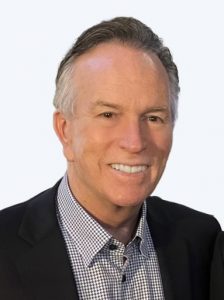
Dave Gilmore is the President & Chief Executive Officer of DesignIntelligence. He is a frequent university lecturer as well as corporate speaker across the Built Environment industry. His work involves frequent interaction with leadership teams and governance entities regarding leadership transition, business sustainability, and organizational resilience. He serves as a strategic advisor to many of the largest and most successful Built Environment industry firms in the United States. Dave is also the Founder and Managing Director of The Tricord Group, a boutique equity fund with partners in Atlanta, Boston, and Minneapolis.
Episode 8 Part 2 Credits:
- Created By Bob Fox
- Produced By Work Design Magazine
- Directed By Bob Fox
- Edited By Katie Sargent & Bob Fox
- Special Thanks to Michelle Weiss

